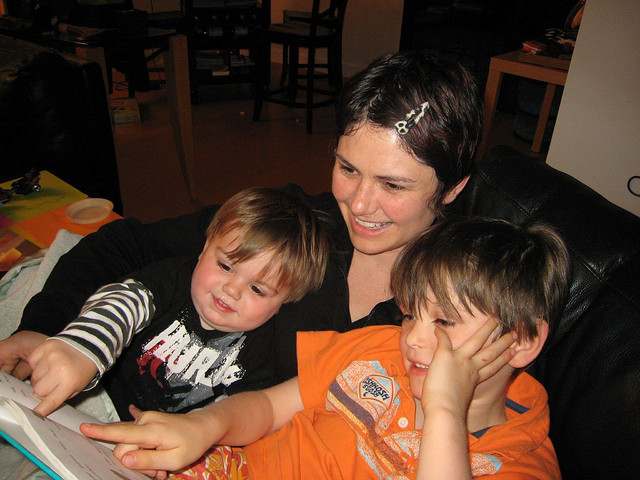
“Compassion is the basis of morality.” ~ Arthur Schopenhauer
Other than real life experience, which can be painful and messy, is there a better way to teach children the values we want them to learn than through storytelling? My personal experience says no.
The lessons that truly stuck with me about ethics and morality came from storytelling. Sometimes the stories came from an adult who was passing their wisdom to me, but in many cases these lessons came directly from the books I read or that were read to me.
Looking back, I was unaware, in most cases, that I was being taught any kind of lesson. I simply internalized it naturally. I believe this is typical with most children. They feel a natural empathy toward the characters in stories and, as a result, they either understand or learn the lessons those characters learn. Or, in other instances, they empathize with the characters when they are hurt by another person’s lack of morals and ethics.
Knowing the positive impact that books had on my moral development as a child, I decided I would explore exactly what it takes to deliver these lessons to children through writing a book.
Here are six things I learned:
You have to Find Inspiration in Great Children’s Books.
One of the first, and undeniably the most enjoyable, steps I took on my journey was to find inspiration in children’s literature. This meant revisiting some books from my own past (love!), and exploring several titles that had been written long after my own childhood was over…or that I had simply missed.
I scoured used bookstores, the children’s sections of libraries all over the county that I live in, and even ordered boxes of books from the internet. Two things stood out to me. I began to realize that there were lessons in these books that I never caught (at least consciously) as a child. This part I loved. I also came to the sad conclusion that many of the books I was reading appeared to use lecture as their primary means of delivering their intended lessons. I was happy for the positive things my research brought into my life, but it was this negative thing that caused me to learn my second lesson…
Children will Simply Tune out Lessons Delivered Using Heavy-Handed Methods.
As I was happily wading my way through the books that I had procured, I engaged in a bit of casual market research using the children in my life. When I read the books to children that I believed focused on lecturing over storytelling, or had they read these books to themselves, the feedback was virtually the same across the board. The kids mostly indicated that the books were boring.
Younger kids tended to miss the lessons entirely, and instead focused on describing elements that were interesting to them such as a funny old man or a talking animal. Older kids usually got the lesson, but found the story to be boring. Many of them also expressed that they thought the author didn’t think that the kids reading the story were very smart or very nice.
“The best morals kids get from any book is just the capacity to empathize with other people, to care about the characters and their feelings. So you don’t have to write a preachy book to do that. You just have to make it a fun book with characters they care about, and they will become better people as a result.” ~ Louis Sachar
I got completely different results when I shared the stories where I believed that lessons were nicely woven into the stories. In these conversations, the kids were much more engaged and eager to talk about the stories and what they had learned. They expressed empathy for what various characters thought and felt, and in the cases of the older kids, were able to relate the lessons to their own lives. This part, I believe, is a really great indication that the author has succeeded in having their intended impact.
Humor is an Amazingly Effective Tool for Teaching Lessons in Morals and Ethics.
I really believe that if you can make somebody laugh, you have their full attention at least for that moment. That moment is the perfect time to make a point that really hits home. When I think of the times when I have experienced this as an adult, I often think of the late comedian, George Carlin. George was an expert in delivering comedy that was absolutely hilarious (and profane!) while at the same time making excellent points about politics, religion and human behavior. For me, the result was almost always hysterical laughter coupled with the realization that George had just made an amazingly relevant point. One children’s author who does an excellent job of weaving humor and moral lessons in a wickedly funny way is Roald Dahl.
Children Need to See Justice, Acceptance, and Forgiveness.
If you read children’s stories and fairy tales published a century or so ago, you’ll find some things that are quite shocking. One of the most notable things is the tendency for characters who misbehave to suffer fates that are quite horrific. When I spoke about this with a good friend, he theorized that this might be due to the fact that life in those times was simply harsher, and that it was reflected in the literature. We discussed how these extreme consequences may have been used to protect children from dangers that truly were life-threatening. We also discussed how religious-based fears, superstitions, and societal roles played a factor in these stories.
Thankfully, these days my peers and I are fortunate enough to enjoy lives where we don’t need to focus on lessons of survival or instilling fear in our children. Instead, we have the luxury of teaching our kids empathy, honesty, fairness, and acceptance, and we can deliver these lessons via stories that focus on making kids understand that they will be supported and loved even when their behavior doesn’t reflect the morals and ethics we want them to have. In my estimation that means balancing writing about the realities of behaving in ways that hurts other people (people get angry, friends don’t want to play with you, etc.) with assurances that mistakes can be rectified, people will forgive, and that authority figures are here to help.
Lessons about Morality and Ethics Need to be Easy to Relate to.
I don’t think that you can teach children about ethics and morality through children’s stories unless they can relate to the story. I believe that this means sharing lessons that are age appropriate, and also sharing lessons that are relevant to kids’ lives today.
Great Lessons on Ethics and Morality Should Teach Children that they are Powerful.
This final lesson is the most important one that I learned. There are many great books where children can learn moral lessons through witnessing children being supported and taught by others. However, this isn’t the model that can be used to educate children. Children are not passive learners, and this fact is often overlooked by authors. If I ever go ahead with my own children’s book, I believe my focus will be on portraying a child who witnesses an injustice and then takes action to make things right.
I believe this approach will communicate a moral lesson that needs to be learned along with the idea that kids are capable of recognizing problems, fixing them, and creating situations where justice is the ultimate focus.
Relephant read:
Introducing Children to the World of Reading.
~
Author: Laura Callisen
Editor: Travis May
Photo: Flickr/Neeta Lind






Read 1 comment and reply